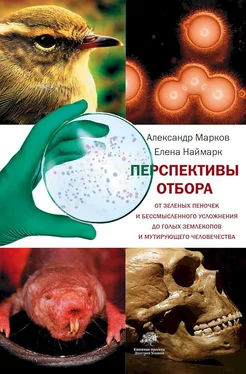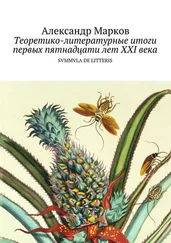Мы не знаем. Но если тенденции, выявленные у исландцев, действуют и в других странах (а это почти наверняка так) и если все это будет продолжаться еще несколько веков, то генетическая деградация станет для человечества серьезной проблемой. Чтобы ей противостоять, необходимо побыстрее развивать науку вообще и эволюционную биологию в частности — пока еще есть кому. Разумеется (и к счастью), сегодня речь уже не может идти о варварских методах искусственного отбора, обсуждавшихся основоположниками евгеники. Но есть смысл думать о разработке высокотехнологичных и гуманных методов коррекции неблагоприятных эволюционных тенденций. В том числе — методов, связанных с отбором гамет или ранних эмбрионов, генной терапией и генной инженерией.
1. Марков А. В. и др. 2015. Материнский эффект маскирует адаптацию к неблагоприятным условиям и затрудняет дивергенцию у Drosophila melanogaster // Журнал общей биологии. Т. 76. С. 429–437.
2. Трут Л. Н. 2007. Обретет ли человек нового друга? // Природа. № 6. С. 11–17.
3. Abbot P. et al. 2011. Inclusive fitness theory and eusociality // Nature. V. 471. P. e1–e4.
4. Alcaide M. et al. 2014. Genomic divergence in a ring species complex // Nature. V. 511. P. 83–85.
5. Alexander R. 1974. The evolution of social behavior // Annu Rev Ecol Syst. V. 5. P. 325–383.
6. Baker C. R. et al. 2013. Following gene duplication, paralog interference constrains transcriptional circuit evolution // Science. V. 342. P. 104–108.
7. Beauchamp J. P. 2016. Genetic evidence for natural selection in humans in the contemporary United States // Proc Natl Acad Sci USA. V. 113. P. 7774–7779.
8. Brawand D. et al. 2014. The genomic substrate for adaptive radiation in African cichlid fish // Nature. V. 513. P. 375–381.
9. Buffington S. A. et al. 2016. Microbial reconstitution reverses maternal diet-induced social and synaptic deficits in offspring // Cell. V. 165. P. 1762–1775.
10. Camperio-Ciani A. et al. 2004. Evidence for maternally inherited factors favouring male homosexuality and promoting female fecundity // Proc Biol Sci. V. 271. P. 2217–2221.
11. Carazo P. et al. 2014. Within-group male relatedness reduces harm to females in Drosophila // Nature. V. 505. P. 672–675.
12. Coleman S. W. et al. 2009. Reproductive isolation, reproductive mode, and sexual selection: empirical tests of the viviparity-driven conflict hypothesis // Am Nat. V. 173. P. 291–303.
13. Condon M. A. et al. 2014. Lethal interactions between parasites and prey increase niche diversity in a tropical community // Science. V. 343. P. 1240–1244.
14. Corral-López A. et al. 2017. Female brain size affects the assessment of male attractiveness during mate choice // Sci Adv. V. 3. P. e1601990.
15. Crabtree G. R. 2013. Our fragile intellect. Part II // Trends Genet. V. 29. P. 3–5.
16. Daly M., Wilson V. 1988. Evolutionary social psychology and family homicide // Science. V. 242. P. 519–521.
17. Dannemann M. et al. 2016. Introgression of Neandertal- and Denisovan-like haplotypes contributes to adaptive variation in human Toll-like receptors // Am J Hum Genet. V. 98. P. 22–33.
18. Deschamps M. et al. 2016. Genomic signatures of selective pressures and introgression from archaic hominins at human innate immunity genes // Am J Hum Genet. V. 98. P. 5–21.
19. Diss G. et al. 2017. Gene duplication can impart fragility, not robustness, in the yeast protein interaction network // Science. V. 355. P. 630–634.
20. Endler J. A. 1980. Natural selection on color patterns in Poecilia reticulata // Evolution. V. 34. P. 76–91.
21. Fuentes I. et al. 2014. Horizontal genome transfer as an asexual path to the formation of new species // Nature. 2014. V. 511. P. 232–235.
22. Gasparini C. et al. 2012. Cross-generational effects of sexual harassment on female fitness in the guppy // Evolution. V. 66. P. 532–543.
23. Ghalambor C. K. et al. 2015. Non-adaptive plasticity potentiates rapid adaptive evolution of gene expression in nature // Nature. V. 525. P. 372–375.
24. Gibson A. K. et al. 2017. The two-fold cost of sex: experimental evidence from a natural system // Evol Lett. 2017. V. 1. P. 6–15.
25. Good B. H. et al. 2017. The dynamics of molecular evolution over 60,000 generations // Nature. V. 551. P. 45–50.
26. Grant P. R., Grant B. R. 2006. Evolution of character displacement in Darwin’s finches // Science. V. 313. P. 224–226.
27. Grant P. R., Grant B. R. 2014. Speciation undone // Nature. V. 507. P. 178–179.
28. Gross J., Bhattacharya D. 2010. Uniting sex and eukaryote origins in an emerging oxygenic world // Biol Direct. V. 5. P. 53.
29. Hamer D., Sirota L. 2000. Beware the chopsticks gene // Mol Psychiatry. V. 5. P. 11–13.
30. Harris K. 2015. Evidence for recent, population-specific evolution of the human mutation rate // Proc Natl Acad Sci USA. V. 112. P. 3439–3444.
31. Hart S. A. et al. 2013. Expanding the environment: gene × school-level SES interaction on reading comprehension // J Child Psychol Psychiatry. V. 54. P. 1047–1055.
32. Highton R. 1998. Is Ensatina eschscholtzii a ring-species? // Herpetologica. V. 54. P. 254–278.
33. Hooper D. M., Price T. D. 2015. Rates of karyotypic evolution in Estrildid finches differ between island and continental clades // Evolution. V. 69. P. 890–903.
34. Hooper D. M., Price T. D. 2017. Chromosomal inversion differences correlate with range overlap in passerine birds // Nat Ecol Evol. V. 1. P. 1526–1534.
35. Hsiao E. Y. et al. 2013. Microbiota modulate behavioral and physiological abnormalities associated with neurodevelopmental disorders // Cell. V. 155. P. 1451–1463.
36. Inoue Y. et al. 2017. Evolution of the wheat blast fungus through functional losses in a host specificity determinant // Science. V. 357. P. 80–83.
37. Johnston S. E. et al. 2013. Life history trade-offs at a single locus maintain sexually selected genetic variation // Nature. V. 502. P. 93–95.
38. Jónsson H. et al. 2017. Parental influence on human germline de novo mutations in 1,548 trios from Iceland // Nature. V. 549. P. 519–522.
39. Keagy J. et al. 2009. Male satin bowerbird problem-solving ability predicts mating success // Anim Behav. V. 78. P. 809–817.
40. Kleindorfer S. et al. 2014. Species collapse via hybridization in Darwin’s tree finches // Am Nat. V. 183. P. 325–341.
41. Kong A. et al. 2017. Selection against variants in the genome associated with educational attainment // Proc Natl Acad Sci USA. V. 114. P. e727–e732.
42. Kopelman P. 2000. Obesity as a medical problem // Nature. V. 404. P. 635–643.
Читать дальше
Конец ознакомительного отрывка
Купить книгу










